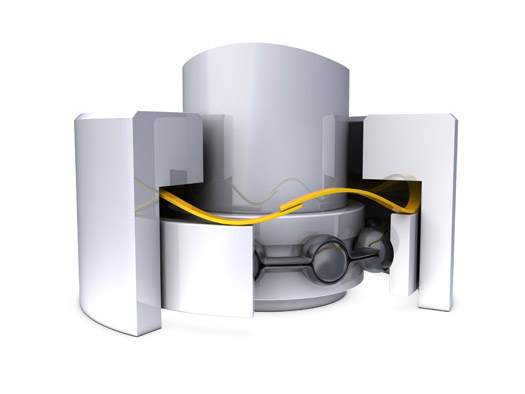Application Spotlight: Wave Springs for Bearing Preload
What is bearing preload?
When assembling individual bearing components, the outer race, inner race, balls, and retainer all work together so that there is a controlled amount of internal clearance between the rings and balls. This radial play is necessary for proper operation, however, in most applications, it is also necessary to help reduce or eliminate the internal clearance to maintain correct functionality.
To remove this internal clearance, an axial load can be placed on a bearing race independently of the external load placed on it. This is called preloading, and it ensures constant contact - reducing or eliminating any play that may occur between components. This becomes a critical factor in most high-precision and high-speed applications.
There are two types of bearing preload: fixed and spring. In fixed bearing preload, the position of the inner and outer races of each bearing is mechanically fixed using either a deadweight (adhesive-based) or through building in an axial adjustment that puts pressure on the bearings. Spring loading provides a constant load that can accommodate slight misalignments and is less expensive than fixed preloading.
Why is it important?
Benefits of preloading a bearing include:
- Extends bearing lifespan
- Elimination of ball skidding
- Vibration reduction

- Noise reduction
- Precise shaft positioning
- Greater load sharing between bearings
- Rotational accuracy
- Control and reduction of axial and radial deflection under an applied load
For more in-depth advantages, click here.
Why use a wave spring for bearing preload?
A wave spring can provide all the benefits of spring preloading while also taking up dimensional variation from thermal expansion or cyclic loading. Smalley offers many types of wave springs for the enormous range of applications across many industries.
Which wave spring should I choose for my application?
Every application is unique, which makes selecting the proper wave spring very important. Smalley has a standard bearing preload wave springs series (SSB), designed for popular bearing sizes. It should be noted that overall tolerances will be a very important factor as placing too much preload on the bearing can reduce longevity, while too little can cause higher noise output in high vibration systems.
Correct material selection will also be vital, as the incorrect material choice can lead to failure in operation. While Smalley wave springs are stocked in both Carbon Steel and 17-7 Stainless Steel, we are able to offer wave springs in a variety of alloys to meet your application’s operating conditions. For more information, reference our materials page. If you do not see a material you are looking for, please contact Smalley Engineering.
What if I have more questions or do not see a standard that fits?
If one of our standard parts doesn’t work for you, we can help design a custom spring for your preload needs. Standard or custom, Smalley engineers are available to help you choose the best part for your application.
To read more about preloading a bearing, read How and Why You Should Use a Wave Spring for Bearing Preload.
More helpful resources:



Connect With Us